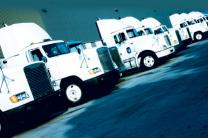(BLOG): Mark Forrest of Trimble shows how investment in today’s field service management technology can help streamline business processes leading to long-term efficiency, profitability and customer retention.
In business today, operations managers face ever-mounting internal and external challenges to achieving business excellence. Customer expectations are at an all-time high, leading field services to play a major role in customer satisfaction, brand reputation and ultimately customer retention and profitability. Adding to this, unpredictable fuel prices, incoming legislative demands and environmental concerns make today a challenging time to run a service operation.
Maintaining efficient field-based operations is essential for any business to remain competitive and investment in technology is critical in helping to achieve this. A solution which boosts productivity while reducing costs ensures a business achieves a genuine Return on Investment (RoI).
Unfortunately, there is often a lack of understanding of the huge cost savings field service management systems can deliver, alongside improvements in workforce productivity and customer satisfaction.
Trimble recently carried out an independent study among directors and senior managers operating large field-based work forces in the UK and found that only 18% possess fully automated scheduling, dispatch and mobility tools. The majority are operating partly-manual, partly-automated systems, integrating a diverse mix of often incompatible legacy systems. This is preventing many organisations from realising the full potential of technology to increase workforce efficiency, a crucial factor in achieving field service excellence.
The rise of ‘intelligent’ data
Fleet management and telematics have emerged as being powerful management tools and provide new levels of field service and vehicle fleet performance. Today’s solutions integrate GPS with wireless communication and emerging technologies to enable every aspect of mobile operations to be identified, measured, and analysed, delivering greater intelligence to fleet managers.
The information provided typically includes the vehicle location, speed and time, but also may include work order information, driver behaviour and vehicle diagnostics data such as miles per gallon or vehicle faults, all determined by the in-vehicle telematics.
As a result of the insight delivered, businesses can start to reduce direct expenses such as fuel costs by optimising route planning, improving operational efficiencies and driving revenue generation through top quality customer service and maximum flexibility. With the knowledge of where resources are, their status and time on site, businesses can make the real-time decisions required to keep their operations running as smoothly as possible.
According to this independent research, this value is already being recognised with organisations running field-based workforces seeing one of the top priorities for future technology investment and upgrades to be within the area of fleet management. Fleet management and telematics solutions can service all aspects of fleet operations to provide a 360 degree view of their utilisation and performance. Particularly when deployed in conjunction with other field service management tools for managing the work and the mobile worker, these solutions are key elements to achieving efficiency, productivity and cost saving goals.
Managing the work boosts productivity and customer satisfaction
Operations managers require a clear understanding of what is happening in the field to monitor performance and a work management solution provides real-time job status of each mobile worker as well as alerts for proactively managing productivity. If a job is in jeopardy of being missed or a customer emergency comes up, modern work management solutions mean these are automatically highlighted by the technology and a proposed solution put forward as to how to redeploy resources to meet the new requirements.
The capabilities and benefits that can be achieved include:
– Optimising and automating mobile work schedules
– Communicating to laptop or smart phone to view work details, provide current work status and receive work assignments without returning to the office
– Monitoring arrival times, distances travelled, stops made and overtime usage
– Comparing planned vs. actual work done per day/shift
– Adjusting schedules and reassigning work.
The above capabilities evidently lead directly to increased customer satisfaction due to such outcomes as increased on-time service delivery performance and reduced customer complaints for late technicians or missed appointments. Once you start comparing the information taken from your field operations regularly it is easy to see where improvements can be made or where patterns exist that you can plan for in advance to minimise the impact.
Managing the worker and mitigating risk
Health and safety is understandably a high priority for organisations with field-based workers, especially those doing a significant amount of driving out in the field. These individuals not only face greater risks than office-based employees, but can also expose members of the public to danger through aggressive and unsafe driving, with disastrous consequences for the company’s reputation as well as the legal risks involved.
As telematics has evolved, both the amount and type of data gathered has increased significantly. Driver behaviour and vehicle diagnostics information are now available that can identify how a vehicle is being driven and any faults that may affect performance. Taking steps to mitigate poor driving or proactively servicing underperforming vehicles not only significantly reduces on the road risk but minimises vehicle breakdowns or unscheduled downtime.
Trimble’s research discovered that 51% of those surveyed agree that the technology they are using to manage their employees’ safety is in need of updating, with 44% stating that their risk assessment software is in need of the most improvement.
Driver safety solutions enable managers to monitor driving behaviour and complete back office analysis of aggressive manoeuvres, such as hard acceleration, braking, turns and speed. With this data at hand, recommendations on training can be made for individual drivers, resulting in lower accidents and liability therefore helping to manage the risks and costs associated with work-related driving. Essentially, telematics can be used to improve the efficiency of, rather than completely replace, health and safety policies, while also helping to increase efficiency, cut costs and help maintain a brand’s reputation of executing a safe driving culture.
Going green and cutting costs
Introduced and incoming legislation has placed mounting pressure on businesses to improve their sustainability and accelerate the move to meet green targets. For field-based organisations especially, monitoring fuel consumption through telematics is a quickly achievable method of reaching environmentally friendly targets.
Fuel prices have seen a consistent increase over the years and business owners have become very conscious of managing these costs. Reducing fuel usage through data interpretation can result in significant cost savings and will additionally lead to a reduction in CO2 emissions.
Lack of budget and cost is a major barrier to rolling out new technology but the increased sustainability credentials derived from the financial and environmental advantages are key benefits that influence business decisions. Trimble’s recent research shows that nearly two thirds of respondents believe that sustainability plays a key role in their business plan and a further 64% feel sustainability will have a significant effect on their business moving forward.
The desire to become more sustainable is also largely driven by perception and company image, as being green, and being seen to be green in the public eye, is becoming increasingly important. Forward-thinking businesses are moving towards sustainability as a way of promoting their organisation and ultimately to attract and retain new customers.
Mark Forrest (pictured above) is general manager of Trimble Field Service Management in the Trimble Mobile Solutions segment, a position he has held since January 2012. In this role, Mark is responsible for providing worldwide mobility-based productivity solutions to the communications, field services and trades markets (HVAC, security, etc.) Mark brings more than 11 years of experience with Trimble to the Mobile Solutions segment.
* * * *
Trimble’s Field Service Management Division provides visibility into field and fleet operations so businesses can streamline efficiency and increase productivity. The Field Service Management suite includes fleet management, work management and scheduling, worker safety and mobility solutions that transform the effectiveness of work, workers and assets in the field. The cloud-based portfolio allows Trimble to offer customers industry-specific, enterprise-level solutions for exceptional performance and ease of use. www.trimble.com/fsm











